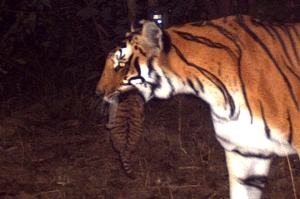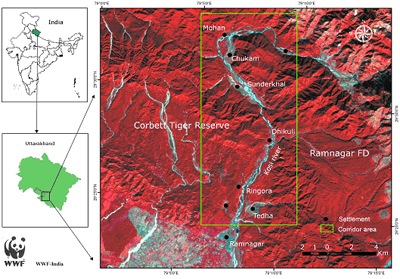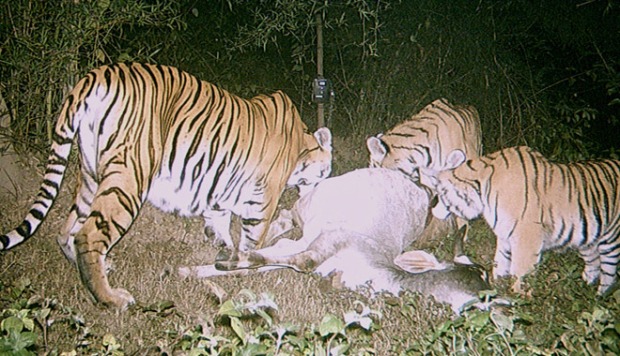Rare Bengal Tiger Mom and Cubs Caught in Camera-Trap Photos

Wired Science
A female tiger and her cubs have been photographed roaming a north-Indian river valley by hidden camera traps. The images were taken in the Kosi River corridor, part of remote India’s Terai Arc Landscape.
A photo taken in January shows the tiger mom carrying a one-month-old cub in her mouth (left). Another taken on Nov. 26, 2011 shows the same female feasting on a domestic cow with two large cubs (below).
“Knowing the tiger numbers and their movement routes in a corridor would provide a sound database in taking decisions on developmental activities within and around the corridor,” said World Wildlife Fund coordinator Joseph Vattakaven in a press release.
 The Bengal tiger is an endangered Indian subspecies called Panthera tigris tigris. According to the latest population survey by the International Union for Conservation of Nature, no more than 2,500 Bengal tigers exist globally.
The Bengal tiger is an endangered Indian subspecies called Panthera tigris tigris. According to the latest population survey by the International Union for Conservation of Nature, no more than 2,500 Bengal tigers exist globally.
India harbors most of them with an estimated population of 1,706 tigers in 2011 — up from roughly 1,411 tigers in 2006. The boost to the population and its density (about 15 tigers per 39 square miles in the Kosi River corridor) can be deceiving, however, as the big cat’s habitats are shrinking.
Other camera-trap images gathered by the WWF suggest at least 13 tigers use a particular piece of the river corridor, and that this parcel of land may be under threat from an increasing number of tourist resorts.
“Human-animal interaction is frequent owing to movement of humans in forests as well as the expansion of tourism in the area,” WWF coordinator K.D. Kandpal said in the release. “If unchecked, the resorts mushrooming in the area will choke the corridor and block the free movement of tigers through it.”

Although the tigers managed to kill a domestic cow, the WWF allegedly compensated the animal’s owner to prevent a retaliatory killing. While not an ideal arrangement, the organization asserts that the strategy works.
“The fact that the tigress survived and it was photographed later is an example of the cattle compensation scheme working when implemented in earnest,” the release stated.



